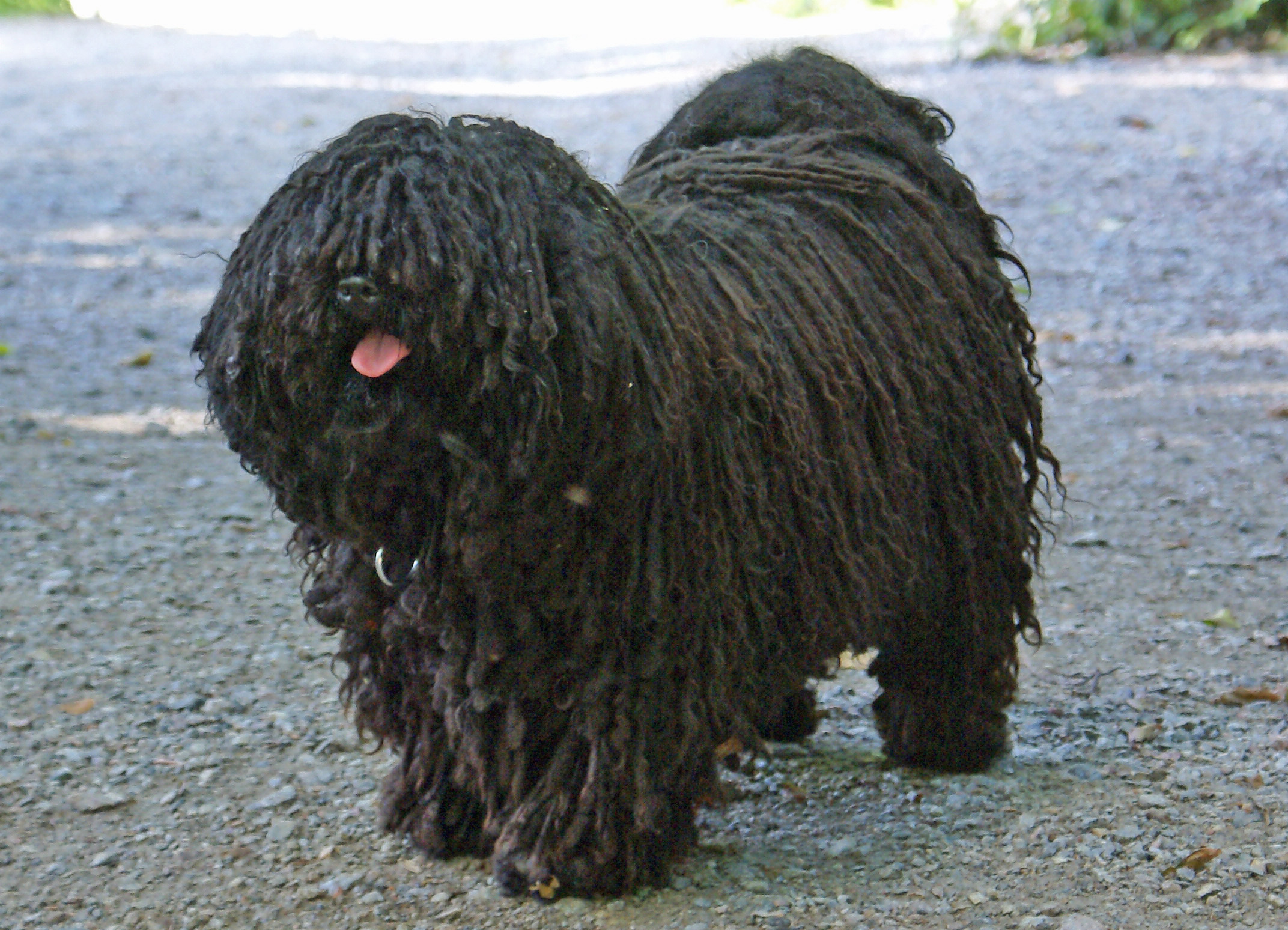
The Breed History
This ancient Hungarian breed is termed Puli in the singular and
Pulik in plural. The Magyar people bred these shepherding dogs for
at least a millennium. It is likely that the Tibetan terrier was the
main source of foundation genes. In the 16th century, European
invaders brought other sheepdogs with them and these were
crossed with the Pulik, resulting in a dog termed Pumi, though the
terms Pumi and Puli were used interchangeably. The breed was
rescued from obscurity in the early 1900s. In 1915 the first breed
standard was drawn up and in the shows, various size categories
were recognized. First AKC registration occurred in 1936. This dog
may be an ancestor of the Poodle.
Breeding for Function
These dogs were used exclusively for daytime sheep herding. Today,
they are a popular companion dog, used for watchdog and police
work purposes, and enjoy water retrieving.
Physical Characteristics
Height at Withers: female 16" (40.5 cm), male 17" (43 cm).
Weight: 30-40 lb (13.5-18 kg).
Coat: An off-black, which is tinged with bronze or grey is the
standard breed color, though especially in Hungary, white and
gray are seen. A small white spot on the chest is allowed. Body
skin is darkly pigmented. The undercoat is wooly, short and soft.
It naturally intermingles with the long outer coat. As the puppy
matures, the tangle evolves into the cords that characterize the
adult coat. Cording normally begins around the time of sexual
maturity. This adult coat development process can take 4 or 5 years
to complete. Cords may reach the ground if untrimmed. The dog
may be shown corded or groomed.
Longevity: 11-14 years
Points of Conformation: The profuse corded coat is the trademark
feature of this breed. The compact, square, medium build is hard to
assess through the profuse coat. The head is medium in size, large,
and the almond shaped eyes are dark brown with dark palpebral
margins. Cords normally hang over the eyes in mature dogs. Ears
are medium sized, triangular, high set, and hang down beside the
head. The stop is average, skull is slightly domed, and the nose is
black and large. The muzzle tapers moderately. Flews are tight. The
neck is medium in length and muscling, not throaty, the topline is
level, and the thorax is deep with well-sprung ribs. The abdomen is
moderately tucked up. The tail is carried up over the back and limbs
are straight boned. The feet have thick pads and well-arched toes,
are round and compact. Dewclaws may be removed. They have a
very elastic stride, and are very agile and fast on their feet as would
be expected of a sheep herding dog.
Recognized Behavior Issues and Traits
Reported breed characteristics include: Excellent watchdogs, they
are intelligent and friendly in temperament. Pulik are easy to
obedience train and are playful. Good for country or city living. As
cords form, they should be separated down to the skin to prevent
matting. Though they do not tend to get a doggy odor, after
bathing it is important to fully dry the dog to prevent mildew in the
cords. The cords do not shed.
Normal Physiologic Variations
None reported
Drug Sensitivities
None reported
Inherited Diseases
Hip Dysplasia: Polygenically inherited trait causing degenerative
joint disease and hip arthritis. OFA reports 10.1% affected.
Elbow Dysplasia: Polygenically inherited trait causing elbow
arthritis. OFA reports 5.9% affected.
Patella Luxation: Polygenically inherited laxity of patellar
ligaments, causing luxation, lameness, and later degenerative joint
disease. Treat surgically if causing clinical signs. OFA reports 5.2%
affected.
Disease Predispositions
Persistent Pupillary Membranes: Strands of fetal remnant
connecting; iris to iris, cornea, lens, or involving sheets of tissue.
The later three forms can impair vision, and dogs affected with
these forms should not be bred. Identified in 26.88% of Pulik CERF
examined by veterinary ophthalmologists between 2000-2005.
Retinal Dysplasia: Retinal folds, geographic, and generalized
retinal dysplasia with detachment are recognized in the breed. Can
progress to blindness. Reported in 7.50% of Pulik CERF examined by
veterinary ophthalmologists between 2000-2005.
Cataracts: Anterior cortex punctate cataracts predominate in the
breed. Unknown mode of inheritance. Identified in 3.44% of Pulik
CERF examined by veterinary ophthalmologists between 2000-2005.
CERF does not recommend breeding any Puli with a cataract.
Hypothyroidism: Inherited autoimmune thyroiditis. 2.9% positive
for thyroid autoantibodies based on testing at Michigan State
University. (Ave. for all breeds is 7.5%).
Corneal Dystrophy: Epithelial/stromal form causes opacities on
the surface of the cornea. Unknown mode of inheritance. Identified
in 1.25% of Pulik CERF examined by veterinary ophthalmologists
between 2000-2005.
Diabetes Mellitus: Sugar diabetes caused by a lack of insulin
production by the pancreas. Control with insulin injections, diet,
and glucose monitoring. Identified as a breed at increased risk of
developing diabetes.
Deafness: Congenital deafness can be unilateral or bilateral.
Diagnosed by BAER testing. Reported as a breed at risk by Strain.
Micropapilla, Oligodontia, and Progressive Retinal Atrophy are
reported.
Isolated Case Studies
None Reported
Genetic Tests
Tests of Genotype: none
Tests of Phenotype: CHIC Certification: Required testing includes
hip radiographs, CERF eye examination, and patella evaluation.
Recommended tests include BAER hearing test, elbow radiographs,
and congenital cardiac disease evaluation by a cardiologist or
specialist.
Recommend thyroid profile including autoantibodies.
Miscellaneous
- Breed name synonyms: Hungarian Puli, Hungarian Water Dog.
- Registries: AKC, UKC, CKC, KCGB (Kennel Club of Great Britain),
ANKC (Australian National Kennel Club), NKC (National Kennel Club).
- AKC rank (year 2008): 142 (102 dogs registered)
- Internet resources: The Puli Club of America: www.puliclub.org
Puli Canada: www.pulicanada.ca
Hungarian Puli Club of Great Britain:
www.hungarianpuliclubofgb.co.uk
Photo Gallery of Breed - Puli - Dog Breed
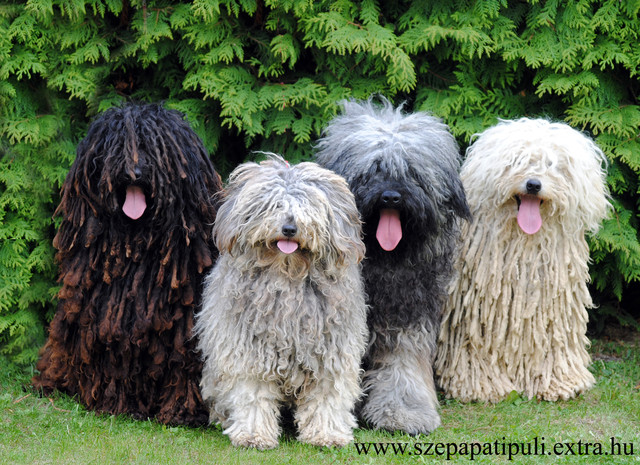
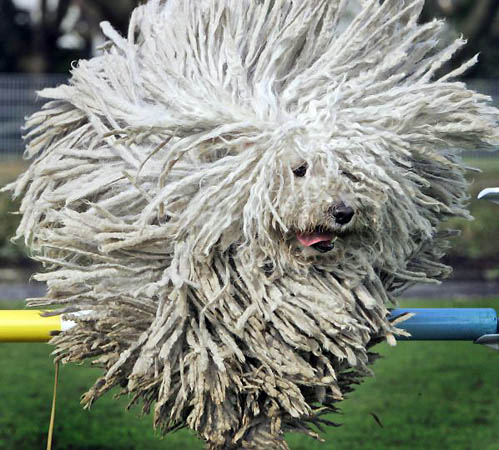
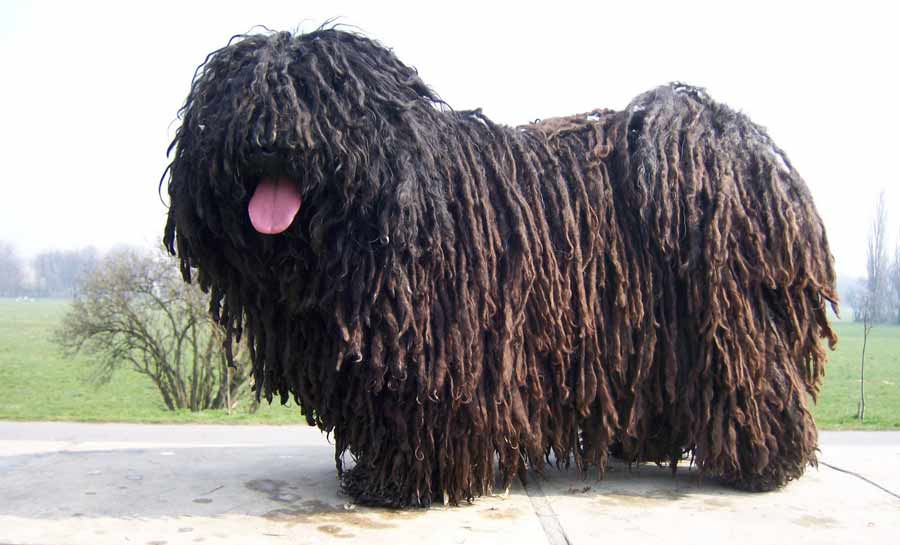


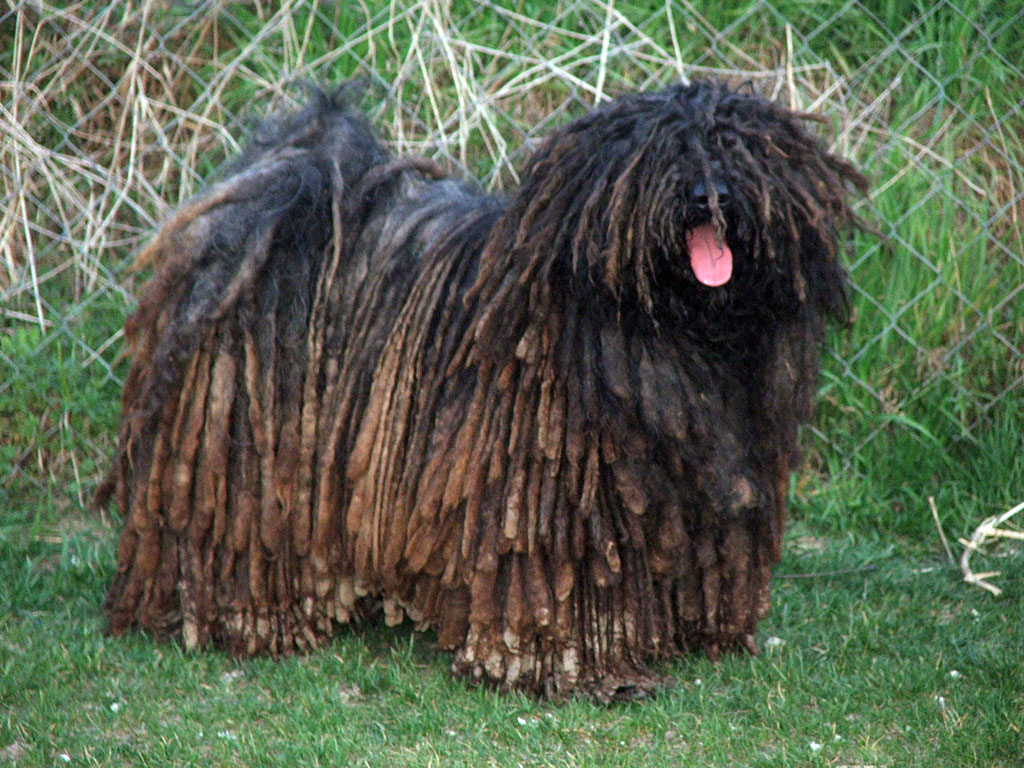

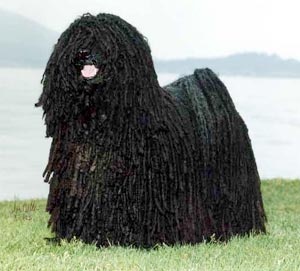
 Animalia Life
Animalia Life